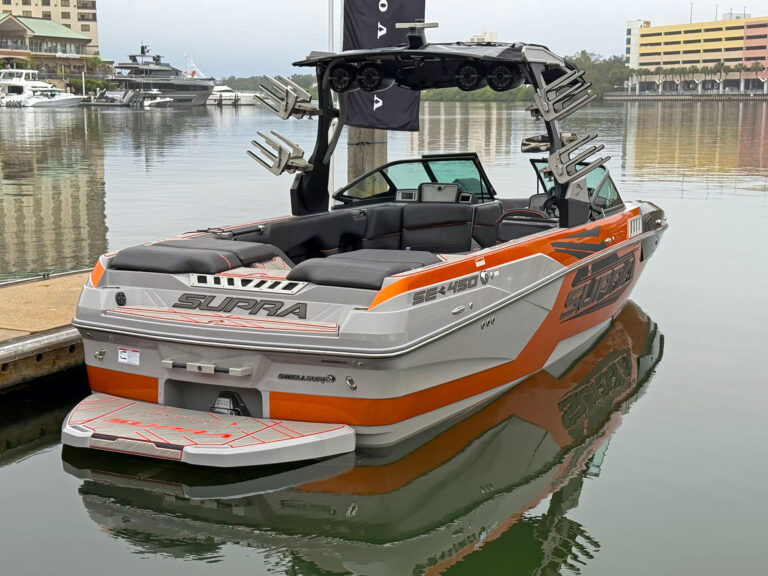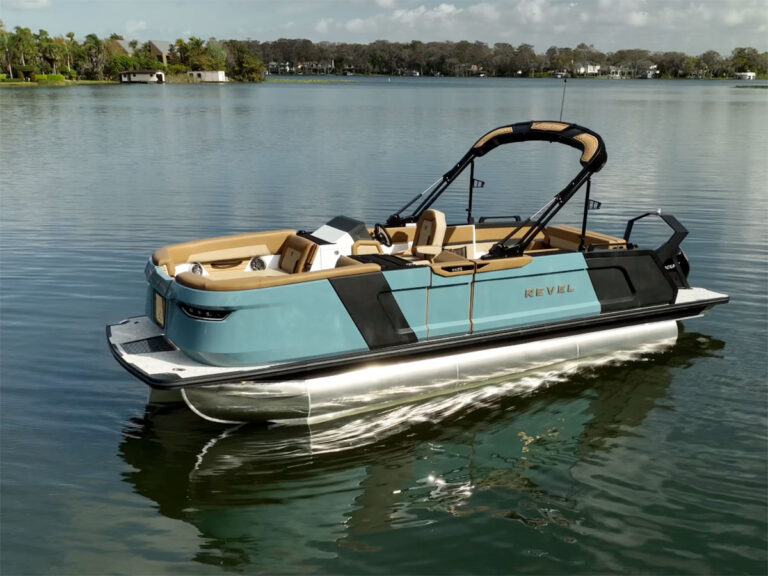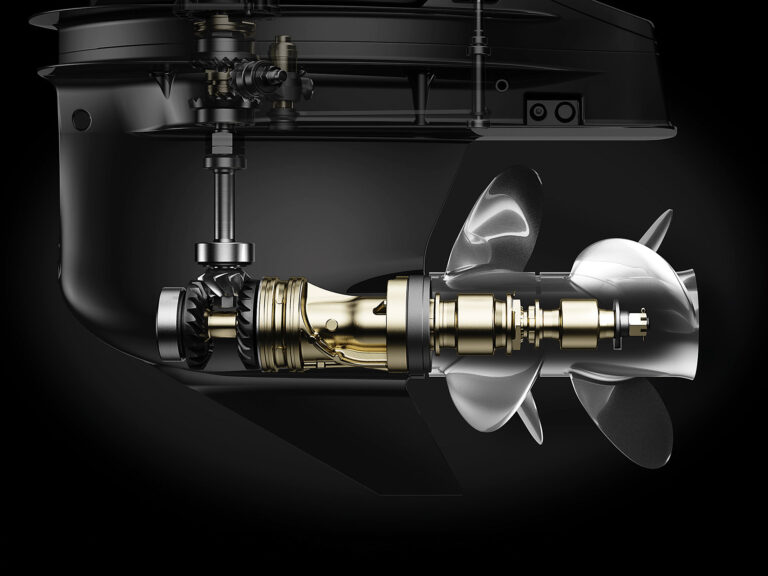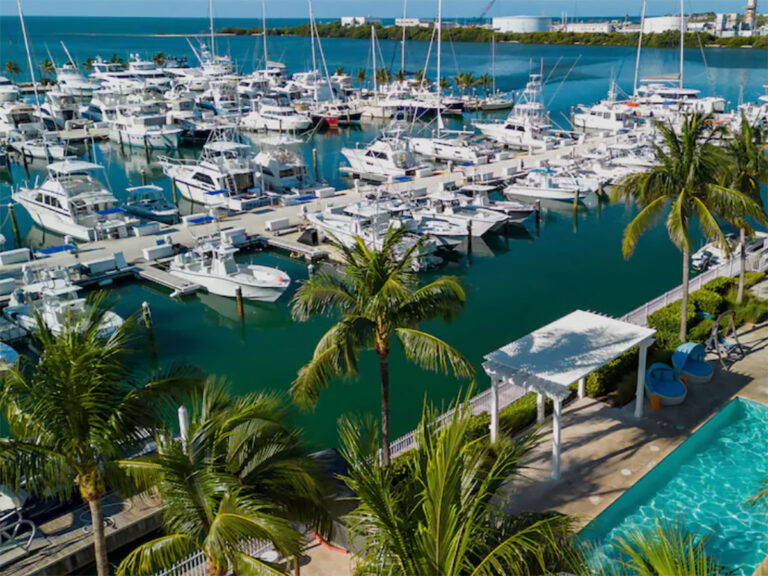
Few things in recreational boating lit up social media the way images of Volvo Penta’s Forward Drive did when it was first introduced five years ago. (Actually, images of Forward Drive still draw loads of comments.) Forward-facing propsets are like the Kardashians of recreational boating, garnering commentary from far and wide.
“What happens when you hit the bottom?” “Oh, that will be in the shop a lot!” “What’s the point?”
Of course, five years later, we know that Forward Drive has proven itself reliable. Thousands of units have been installed, and more than 50 models of boats currently offer with this innovative system. What the internet pundits got right was to question the reason for the creation of such a unique marine propulsion system in the first place. So, just what was the impetus for the creation of Volvo Penta’s Forward Drive?
“Forward Drive started as napkin scratches. We noted the clear trend in popularity of wakesurfing boats and wanted to participate,” says Jens Bering, vice president of marine sales for Volvo Penta of the Americas.
For those who may not know, wakesurfing has exploded in popularity. It is an easy-to-do, low-impact watersport that both young and old, and athletic and nonathletic crew can enjoy. It also happens just 6 or 8 feet off the transom, so guests aboard can gab with whoever is surfing, making it more social than skiing or wakeboarding. But that proximity means any boat with exposed propellers—i.e., an outboard or sterndrive—is potentially dangerous to surf behind, which relegated wakesurfing to inboard-powered boats. At least, it did until Volvo Penta capitalized on a gap in the marketplace using its own engineering expertise and legacy.
“We wanted to put our own spin on wakesurfing,” said Bering during an episode of Boating Roundtable, on Boating’s YouTube channel. “Using technology we are really good at—Duoprop and IPS (Volvo Penta’s forward-facing, dual-prop inboard propulsion system)—that’s where our minds went in creating a more versatile solution.” By turning the drive forward like its IPS drives, Volvo Penta eliminated the safety objection to surfing behind a sterndrive-powered boat and opened up the world of wakesurfing to bowrider boats—and thus, a wider variety of boaters.
Inboard watersports boats are good at what they do. If one is looking for competition-level wakesurfing waves of the largest size that pack the absolute most power, and looking for the most control over the shape of those waves, then an inboard tow boat is the way to go. But for boaters who like to wakesurf but also need a boat with other qualities, Forward Drive can prove more versatile. For instance, a bowrider with Forward Drive and a ballast system can create and shape waves that are fine for many boaters; though, again, perhaps not to the specs of true experts. But the runabout-boat type typically offers a softer-riding, deeper-V hull; higher speed and efficiency for the same power; and a drive that kicks up if it strikes something, or that can be trimmed up for better efficiency or to reduce draft. Also, a bowrider’s deeper hull allows fitting an enclosed head that can make long days on larger bodies of water more comfortable. Forward Drive allows boaters of a more generalist bent than hardcore watersports enthusiasts to enjoy wakesurfing as one part of an overall boating program. Forward Drive is not so much for wakesurfers as much as it’s for boaters who want to wakesurf.
Many thousands of boaters running more than 50 models of boats seem to agree. Happy fifth anniversary, Forward Drive!





